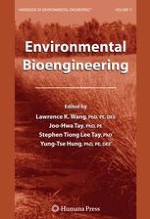2010 | OriginalPaper | Buchkapitel
9. Bioremediation
verfasst von : Joseph F. Hawumba, Ph.D, Peter Sseruwagi, Ph.D, Yung-Tse Hung, PhD, PE, DEE, Lawrence K. Wang, Ph.D., P.E., DEE
Erschienen in: Environmental Bioengineering
Verlag: Humana Press
Aktivieren Sie unsere intelligente Suche, um passende Fachinhalte oder Patente zu finden.
Wählen Sie Textabschnitte aus um mit Künstlicher Intelligenz passenden Patente zu finden. powered by
Markieren Sie Textabschnitte, um KI-gestützt weitere passende Inhalte zu finden. powered by
